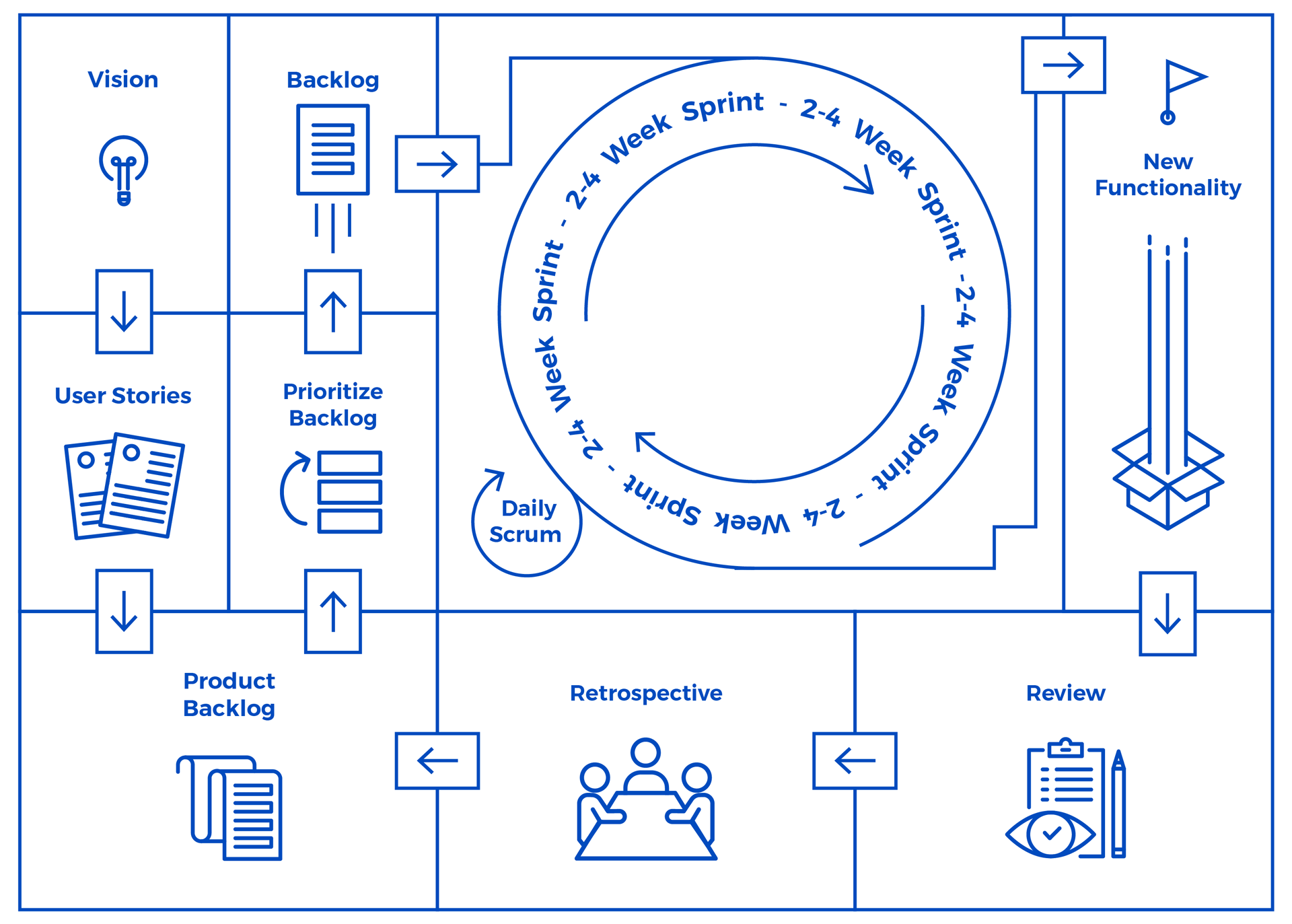We are an agile driven company at our heart. Our goal is to support our clients in large projects with scalable and high-performing teams. But what is required to get the most out of agile software development? How can you improve the return on investment (ROI) of your project while reducing your sunk costs at the same time?
Benefits of the agile approach
Agile has been a growing thing in the last decades, especially in software development where it was conceived. It’s said that if you develop your software in an agile fashion, your customer satisfaction is higher; therefore your sales go up. Not just that, you will be able to do more in less time; your employees will be happier and have stronger motivation. Furthermore, your innovation rate will skyrocket and it’s just a matter of time until you enter the Fortune Global 500. In a nutshell: Agile development focuses on the requirements with the highest ROI.
Agile is key – but how?
It should not come as a surprise that this is actually much harder to do. A lot of companies see little benefit from the changes they worked hard to implement. Some organizations even fail in their agile transformation and are left off worse than before.
But why is it so hard and how do you actually profit from going agile or working with an agile company? Many underestimate that for agility to have an impact more than just the developers have to adapt and it needs constant work.
So, in order to help you get the maximum out of having your software developed in an agile way, I will offer a few guidelines that will increase your profit and overall satisfaction of all stakeholders.

Agile software development process (source: Cloudflight)
Work in iterations
As today’s economy speeds up ever-changing, never staying the same for too long, so do requirements. While you need to have an overall product vision, it just doesn’t make sense to over-prepare features that will not be implemented within the next one or two months. Too much could change. Maybe today a feature is of high importance, but along come force majeure acts and other features need to be implemented with highest priority. And by the time you get back to the original item, it might no longer be relevant because the market has moved on or you simply have a better idea on how to satisfy the market.
Instead, work in iterations which are also called “sprints” in scrum. The aim of every sprint is to develop a functional intermediate product at short notice. Providing requirements just-in-time so that development is never delayed but no unnecessary changes happen prior to implementation is what you should strive for. Slash the time and money wasted on preparing too much ahead while making sure you always have something in the backlog that the development team can work on should they be faster than expected.
Each iteration should produce a potentially releasable increment of software. It might not yet be perfect, but it should be good enough to gather feedback on it from real users which I will explain in more detail later.
Prioritize and re-prioritize
To maximize value created and thus profits, you need to regularly rethink and adapt priorities. Maybe a specific feature is very valuable, but there is an opportunity to gain market share right now with a different feature, you need to re-prioritize. Maybe you have two equally valuable features, but one can be done faster by the development team, then you should make this first priority to increase ROI. Constantly check if you can maximize value created by re-ordering the backlog, but never lose sight of the product vision. Avoid short-term opportunities if they have the potential to obstruct overall progress towards the goal of the product.
Inquire real user feedback
No matter how detailed the requirements were specified, seeing and using the real product is always different. To make sure what was developed is what you want, participate in regular feedback sessions. If at all possible, invite real users to these meetings so that the development team can see the product being used first hand. This will create a better understanding of what you want on the side of the developers and you will get to see which feature a real customer is most interested in. In the end, every idea is just a hypothesis that needs to be validated by testing it against real users.
Foster collaboration
The last piece of advice I can give is also probably the most important one; foster an atmosphere of collaboration between all parties involved. The best way to achieve success is to have the development team working closely with someone that has the business perspective, and both having regular positive contact with users. The benefits of a trusting and close relationship should be self-evident, but nonetheless this is one of most difficult things to achieve. Trust does not come easily in business relationships so it has to be carefully fostered. No one knows your own business perspective better than you do, no one knows the technical aspects better than the development team and no one can give better feedback than a real user. Keep this in mind and keep in mind that if misunderstandings happen, it was usually not by intention.
The road to success to truly use agile to its full potential is not easy, but with these hints you will have an advantage to get the most out of your software projects.
